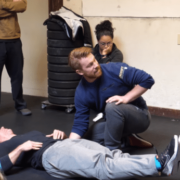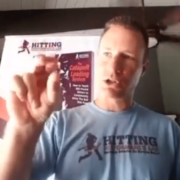ANSWERED: Why is the debate about delayed vs instant gratification important to youth sports? Learn the psychology, exercises, and examples. Are video games better for child development than sports? Explore the Marshmallow Experiment and learn how to stop and overcome the “right now” mentality.
The Ugly Truth About Video Gaming, What It Means To The Youth Hitting Industry, & How To Fix…
Literally taken by surprise, I was SHOCKED to learn…
…how many of my hitters – mostly male – are obsessed with Fortnite. No, “Fortnite” isn’t an old English term used to describe a unit of time equal to 14 days (2 weeks). That’s “fortnight”. I’m talking about “Fortnite”, the video game that beautiful young ladies around the country are taking steps to do the following…
I think all girlfriends should get together and sign a petition to ban fortnite
— Olivia Hutchison (@livihutch) January 20, 2018
For those who don’t know, what’s the “thing” with Fornite? According to Wikipedia:
“Fortnite is a co-op sandbox survival game…Fortnite is set in contemporary Earth, where the sudden appearance of a worldwide storm causes 98% of the world’s population to disappear, and zombie-like creatures rise to attack the remainder.”
When I survey all my hitters about how long they play Fortnite in a day, I get answers all over the board, from zero to 6-8 hours in a day (on their day off). Dang! On average, it seems 1-2 hours is “normal” daily play time. My sample size includes age 8 all the way up to Junior High and High School athletes (about a 50/50 age mix)!
Why should a coach care?
Because of behavioral conditioning: delayed versus instant gratification.
As you may have noticed, video games have changed since we were younger. They’re more sophisticated. More sticky. More addictive. And studies show, have a similar effect on the brain as Methamphetamine. During video game play, the brain is quickly and consistently being showered (rewarded) by the feel good chemical dopamine.
Don’t believe me? Check out the book by Nir Eyal and Ryan Hoover titled, “Hooked: How to Build Habit-Forming Products“. Can you see where I’m going with this?
The challenge to coaches and parents is video gaming will eventually take over physical sports, if we aren’t proactive. WHY? Compared to what the video gaming experience can offer youth athletes, learning a new physical motor skill can take too dang long!! Don’t worry, I’m not calling for a ban of Fortnite…my hitters would KILL ME! Just a little strategic behavioral conditioning. Delayed gratification is the answer, and rest assured, it can be learned and trained. We’ll get into how to do that soon. But first, let’s learn about marshmallows…
SCIENCE-BASED TRAINING:
Improve your hitting strategy dramatically by applying human movement principles.
Learn not only how and what to train but also the science behind the methods.
The Marshmallow Study
If you haven’t already, check out the above video reenactment of the 1960’s Stanford Marshmallow Study. It’s cute to watch the internal struggle, alone in a room, of a 4 or 5 year old leaving a single soft squishy off-white sugar explosion in your mouth marshmallow, in anticipation of a second one, if they can wait 15-mins.
The interesting thing wasn’t so much the physical study, but the effect after the study. Over the course of 40-years after the original study. They tracked the kids from school to their work lives, and as it relates to delayed versus instant gratification, how things turned out for them was fascinating.
What brought the idea of delayed versus instant gratification to my attention was a fantastic book by my friend Bryan Eisenberg titled, “Be Like Amazon: Even A Lemonade Stand Can Do It“. In the book, Bryan references the Marshmallow Study and connects the dots to great business people being experts in delayed gratification (Amazon’s Jeff Bezos as an example).
Furthermore…
CLICK HERE for a great article by James Clear about the Marshmallow Study, and developing the fine art of delayed gratification. You can read the article. Links to many of the original studies are in his post. I’ll just pick out the interesting points for our purposes. First, here are the benefits found in kids with better delayed gratification skills:
“The children who were willing to delay gratification and waited to receive the second marshmallow ended up having higher SAT scores, lower levels of substance abuse, lower likelihood of obesity, better responses to stress, better social skills as reported by their parents, and generally better scores in a range of other life measures.”
This is pretty cool, but there was a slightly modified version of the Marshmallow Study at the University of Rochester. And I think it provides more insight for us coaches…
“Before offering the child the marshmallow, the researchers split the children into two groups.
The first group was exposed to a series of unreliable experiences. For example, the researcher gave the child a small box of crayons and promised to bring a bigger one, but never did. Then the researcher gave the child a small sticker and promised to bring a better selection of stickers, but never did.
Meanwhile, the second group had very reliable experiences. They were promised better crayons and got them. They were told about the better stickers and then they received them.”
…The children in the unreliable group had no reason to trust that the researchers would bring a second marshmallow and thus they didn’t wait very long to eat the first one.
Meanwhile, the children in the second group were training their brains to see delayed gratification as a positive. Every time the researcher made a promise and then delivered on it, the child’s brain registered two things: 1) waiting for gratification is worth it and 2) I have the capability to wait. As a result, the second group waited an average of four times longer than the first group.”
Are we Born with Delayed v. Instant Gratification?
I know what you may be thinking, “Can delayed gratification be taught?” Here’s the whopper conclusion…
“…the child’s ability to delay gratification and display self-control was not a predetermined trait, but rather was impacted by the experiences and environment that surrounded them. In fact, the effects of the environment were almost instantaneous. Just a few minutes of reliable or unreliable experiences were enough to push the actions of each child in one direction or another.”
Did you catch that? “…the child’s ability to delay gratification and display self-control WAS NOT A PREDETERMINED TRAIT…”. Here’s the takeaway…
“…you can train yourself to become better simply by making a few small improvements. In the case of the children in the study, this meant being exposed to a reliable environment where the researcher promised something and then delivered it.
…We can train our ability to delay gratification…by promising something small and then delivering. Over and over again until your brain says, 1) yes, it’s worth it to wait and 2) yes, I have the capability to do this.”
James Clear offered these four steps:
- Start incredibly small. Make your new habit “so easy you can’t say no.”
- Improve one thing, by one percent. Do it again tomorrow.
- Use the “Seinfeld Strategy” to maintain consistency (focus on the process, not the performance).
- Find a way to get started in less than 2 minutes.
Instant gratification and Fortnite are the devil to youth sports participation!!! Doesn’t mean we should ban video games. But it does mean we coaches and parents MUST be more proactive with teaching solid delayed gratification principles. Besides the 4-steps James Clear offered above, what does this look like with today’s young athletes? Check out the following two posts titled,
- “Coaching Kids: 18 Ways To Get YOUR Kids To Listen & Trust You”, and
- TBall Drills: How To Coach Tee Ball Without Going Insane. (works for all ages of humans – maybe not on Fortnite zombies though).
The last thing I want to leave you with is this…
Whether you’re getting hitting information from me or someone else, PLEASE PLEASE PLEASE teach human movement principles that are validated by REAL science, NOT because-I-said-so “bro-science”. Opinions ARE NOT facts. In this day and age of video gaming and the allure of instant gratification, there’s NO ROOM for hitting “opinion”.







